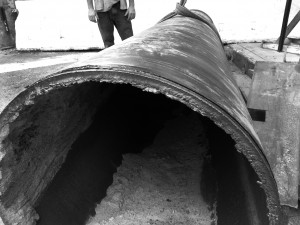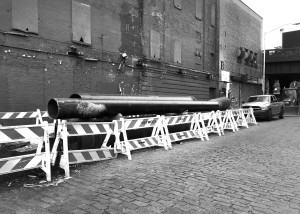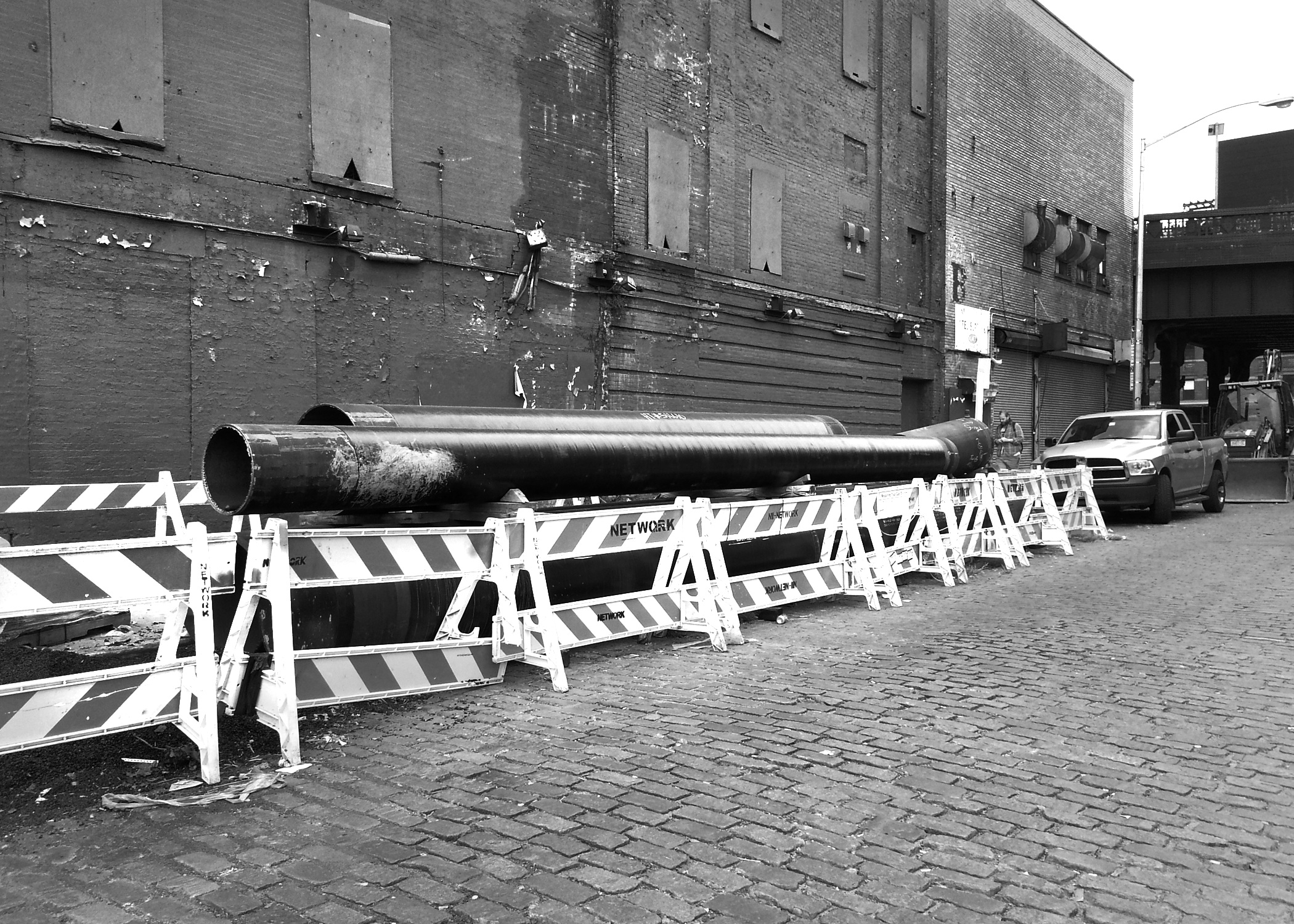On September 9 2010, a natural gas pipeline in San Bruno, California owned by Pacific Gas & Electric exploded. The blast killed eight people, burnt down 38 homes and left a crater approximately four stories deep. A pipeline through New York and Jersey City of similar size and pressure, known as the NJ-NY Spectra pipeline, is due for completion in November 2013.
The $1.2 billion pipeline will serve as a high-pressurized natural gas transportation system that will stretch 16 miles through Staten Island, Jersey City, under the Hudson River, and up to Hudson River Park along the West Side Highway in the West Village.
“I’m not a fan of fracking because I don’t think we know enough about what it does to the geology of the areas that it’s being drawn from,” said Christine Stanton, a long-time resident of the West Village. “They [Spectra] don’t really understand the true consequences, which could be really great.”
The pipeline, which is about the diameter and thickness of a car tire, will supply the NYC metropolitan area with 800 million cubic feet of hydro-fracked gas daily. According to the most recent assessment prepared for the New York City Mayor’s Office of Long Term Planning and Sustainability, the total demand for natural gas in downstate New York in 2010 was 680 billion cubic feet of natural gas.

One of the main extensions of the Spectra NJ-NY pipeline is the Texas Eastern gas delivery network, which exploits natural gas from the Utica Shale and the Marcellus Shale, both of which extend across the Appalachian Basin. Once it reaches the West Village, the gas from the pipeline infiltrates into Con Edison’s already established network of pipelines that supply NYC.
“The Spectra pipeline feeds into the Con Ed pipelines,” said a Spectra representative in a phone interview. “So, if your school is supplied by Con Ed, then you will be indirectly supplied by our pipeline.”
The project has been subject to controversy due to the highly volatile nature of natural gas pipelines, as well as potentially adverse environmental implications. According to the government-run Pipeline and Hazardous Materials Safety Administration (PHMSA) there have already been seven pipeline related fatalities so far this year.
Spectra Energy has a history of safety violations, which include toxic chemical spills, leaks, and explosions. The Environmental Protection Agency fined Spectra for $15 million after finding toxic waste contamination that had dangerous levels of PolyChlorinated Biphenyls (PCBs) at 89 sites along the gas transmission pipeline running from Texas to New Jersey.
The NJ-NY pipeline was cited by PHMSA for 17 inadequacies in safety procedures and regulations in 2011. These areas included continuing pipeline surveillance, emergency plans, and welding procedures.
“Safety is our company’s number one priority,” said Marylee Hanley, an official spokesperson for Spectra. “After extensive planning and community input, the Federal Energy Regulatory Commission, in its comprehensive and multi-year review of the project, concluded that it would cause ‘minimal disturbance’ to both the environment and the community.”
The Federal Energy Regulatory Commission (FERC) has authority over the licensing of interstate natural gas lines. Considering their regulations overrule any state or local regulations, they have the final word on most of the decision-making that goes into the implementation of these pipelines.
FERC approved the NJ-NY pipeline on May 21, 2012, but was met with strong opposition from environmentalists and local residents.
Spectra has set up the website yesgaspipeline.com in support of its project. They claim that the pipeline will benefit the local community by reducing energy costs by $700 million in New Jersey and New York combined, generate $18 million in local tax revenue, not including property taxes and create 5,200 direct and indirect local jobs. They also claim that the pipeline will help improve air quality, eliminating six million tons of carbon dioxide a year by using ‘cleaner burning’ domestic natural gas.
Energy corporations such as Spectra are turning to shale, which is a type of rock found several feet underground, as a source of natural gas. The method used to extract the natural gas is called hydraulic fracturing, more commonly referred to as ‘fracking’. The technique calls for a cocktail of toxic chemicals mixed with three to five million gallons of water to be injected into a drilled hole that runs miles deep into the earth. This creates fractures that release natural gas and petroleum, which are then drawn up through a well at the surface.It is then processed and refined.
According to the National Resources Defense Council, this process leaves behind copious amounts of wastewater, also known as “flowback” or “produced water”, which in most cases finds its way back into the ground or nearby sources of water such as rivers and streams. As a result, many sources of water across the country have been contaminated.
Studies conducted by the Institute for Energy and Environmental Research for Northeastern Pennsylvania have shown that the Marcellus Shale has elevated radioactivity levels in comparison to shallower shale formations. Radon is among the various gases that are extracted from this shale. According to the EPA, radon is one of the leading causes of lung cancer.
“There’s 30 inch, radioactive, highly explosive pipeline being built right underneath your feet,” said Eric Walton, an activist from the opposition group Occupy the Pipeline. “It’s preposterous, this is the first time in FERC’s history they’ve approved a pipeline of this diameter in such a densely populated area.”
Last year, the Sane Energy Project filed a lawsuit against the Hudson River Park, the location where the pipe meets the surface. They petitioned that the Hudson River Park had violated the Hudson River Park Act and New York Public Trust Doctrine by allowing Spectra to build the pipeline despite it not meeting the requirements for proper use of the park. Sane Energy Project lost the case and are working on an appeal.
To address community concerns, FERC recently held a public forum. Tamara Young-Allen, a representative from FERC, said the meeting was contentious. “There was tension between advocates and opponents of the project,” she said. “However, our staff was very effective in allowing time for more than 100 speakers to provide their comments.”

Sane Energy Project will be organizing two upcoming actions in NYC to help promote their campaign for frack-free food. One event, called a “Global Frackdown,” is scheduled for October 19.
“Once all the foodies and locavores in Brooklyn realize their artisanal cheeses could be made with fracked milk,” Denise Katzman, Co- Founder of Sane Energy Project, continued, “the fight against fracking is going to go to an entirely new level.”
Reporting by Michele Berry and Francia Sandoval








Leave a Reply